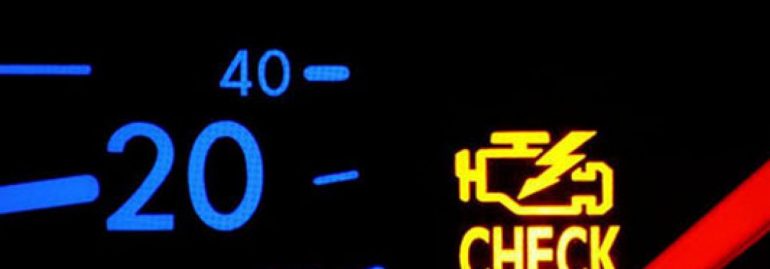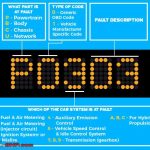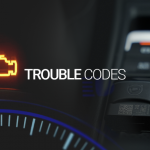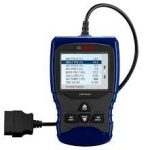
The first step to troubleshooting your car’s engine is to identify its OBDII/EoBD code. To do this, you need to know the vehicle’s model and make, as well as the type of code. The OBDII codes are categorized by system: powertrain, network & vehicle integration, chassis, and misfire system. To understand what each one means, it helps to know the meaning of each letter.
EVAP system
An EVAP system leak detected code may appear on your dashboard as the result of a fuel vapor leak. This code is generated by your power control module, which is responsible for monitoring the EVAP system. It may appear as a generic code, or it might show up as P0442. It indicates a small leak. To determine if this code is related to your vehicle’s EVAP system, follow the steps below.
EVAP system leaks can occur on many makes and models. The diagnosis process is based on the manufacturer’s description and the failure record data. In the case of a leak DTC, you will need to perform circuit and component tests to determine whether the EVAP system is leaking. If it is a component or circuit leak, the code will indicate a malfunction in the system’s electrical circuit.
Some EVAP problems are difficult to diagnose. EVAP leaks can affect all hoses, sensors, and valves. If you are not sure which components are faulty, a technician can use a special “smoke” machine that heats mineral oil to produce a smoke-like vapor. In some cases, this machine may also contain a leak detection dye. However, a professional-level scan tool is required to cycle the purge solenoid or perform other EVAP self-tests.
Finding EVAP leaks is the most difficult part of evaluating your vehicle’s EVAP system. You can use a special “smoke machine” that creates a fine mineral oil mist. The mist will then circulate throughout your vehicle’s plumbing, where it may be leaking. Sometimes a technician can even use ultraviolet dye to make the leak more visible.
A common mistake people make is trying to fix a single OBD2 code. The best way to determine the real problem is to understand how all the components of the OBD-II system relate to one another. An example is P0456, which indicates a leak in the evaporative emission system. If your gas cap is loose, tighten it. If this does not solve the problem, the EVAP system component may need to be replaced.
Misfire system
The first step to troubleshooting the misfire system in your vehicle is to locate the source of the code. This could be the problem with the spark plug insulator. A crack or a broken insulator could be an indication of a misfire. Another clue is a wet spark plug. If you see this problem in both cylinders, the misfire could be coming from a defective spark plug. In the case of a wet spark plug, you may have a bad spark plug, a lean fuel condition, or a compression problem.
A misfire in your vehicle can affect performance, fuel economy, emissions, and other factors. A car that misfires will likely fail emissions tests due to the high amount of hydrocarbons produced. The misfire rate in your vehicle is monitored by the Onboard Diagnostic (OBD II) system, which is located on the engine. If you experience a misfire, the Check Engine light may illuminate. The connector is located under the dashboard near the steering column.
The Misfire system in OBD II uses a block-learning strategy to track the misfires in your vehicle. It records each misfire and stores the total in 16 memory blocks. The misfire count is reset every three hundred and twenty-two revolutions. Eventually, the engine will stop firing altogether. In this way, misfires are detected early, before they cause any damage.
There are two main types of misfire codes: Type A and Type B. Both types of misfire are common problems in most cars, but it is best to check the code with a scan tool to make sure that the condition is not an accident. This code will be accompanied by a freeze frame and can be difficult to identify. If the misfire is in a specific cylinder, the Misfire Counter in OBDII/EoBD may be the cause.
Another reason for the Misfire Monitor in OBD II is that a misfire can be a major deviation from the stoichiometric ratio of the air and fuel. This can be caused by a dirty, miscalibrated, or electrically faulty mass air flow sensor. A 2000 Nissan Sentra with poor idle capability can be a good candidate.
Fuel system
There are various reasons why your vehicle is showing a Fuel system OBD-II code. These codes refer to a malfunction of the fuel system. They can appear for a number of reasons, and are more common in older vehicles than newer ones. This article explains the most common causes for these codes and how to troubleshoot them yourself. To avoid further damage to your vehicle, read the steps below and be sure to check your car’s engine before attempting to fix the problem.
Symptoms of the P213F code are different for each vehicle. In general, this code applies to OBD-II vehicles. If this code is displayed on your vehicle, it means that the fuel pump or supply system has a malfunction and caused the engine to shut down. The problem could be a mechanical or electrical malfunction, and you need to fix the issue before attempting to start the vehicle again.
If your car displays this code, it means that the fuel system is either too rich or too lean. Too much fuel can cause CO, which is poisonous. Fuel can be either rich or lean in certain conditions, and your car computer monitors this balance by monitoring the ECM/PCM and the O2 sensor. To troubleshoot your fuel system, you should check your fuel filter.
PIDs are data messages that indicate readiness of components and systems in your car. The OBD-II data link makes the data stream available to you through a standardized connector. It contains data related to torque, air flow, temperature, and pressure. It also stores fault codes and EGR system data. The coding system may also store test results. If this code indicates a malfunction, you should contact the manufacturer.
A fuel system OBD code may mean a number of different things. An overly rich fuel mixture will increase the engine’s consumption, and this can result in a Check Engine light. Unburned fuel will reach the exhaust system, causing damage to the catalytic converter. To prevent this, the ECM/PCM will take extraordinary steps to keep your vehicle’s fuel system balanced.
Engine performance
If your car is showing an engine performance obdii/eOBD code, it means the control module is experiencing problems. These codes are closely related to P0602, P0603, and P0604 codes. While these codes are common, they are related to different systems and problems within the car. A common example is an issue with the engine’s ECM. This error may be caused by memory loss or power failure.
The OBD-II system monitors a vehicle’s engine performance and Emissions Control System and will turn on the Check Engine Light whenever a malfunction occurs. It also indicates that emissions have exceeded the Federal EPA limit. To diagnose a vehicle’s EBD problem, you can use a scanner to read the codes and determine what needs to be fixed. Some scanners show a message such as “searching for protocol.”
An OBD-II diagnostic trouble code has 5 characters and starts with a letter, indicating a general sub-system. For example, P1209 is the Powertrain code for a Ford. It means that the ICP system is malfunctioning, and the probable cause is a stuck Injection Pressure Regulator (IPR) valve. To diagnose the code, you need a scanner or diagnostics that can read the code.






